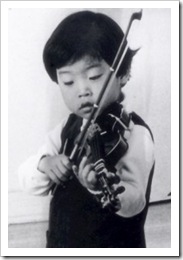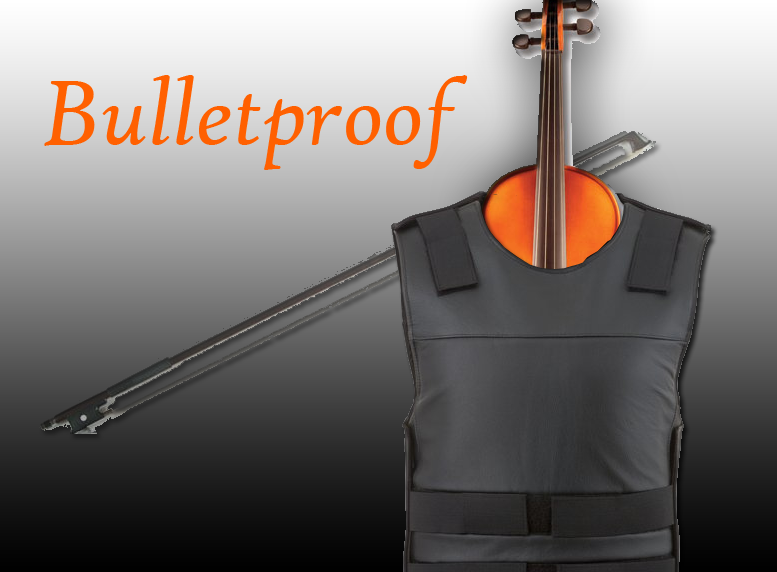Let’s say you are hearing a new colleague play for the first time. How long does it take for you to make a snap judgment about how good they are? Five minutes? One minute? Five seconds? One second?
Most musicians admit that they’re pretty quick to judge and form an initial impression within the first few seconds.
What’s interesting is: not only do we form an impression quickly, but that initial impression tends to carry more weight than the information that comes later. Psychologists call this a “primacy” effect. So what does this mean for musicians?
The implication is that when a performance starts off great, we are more likely to believe that our first impression was correct, and to give the performer the benefit of the doubt. On the other hand, if a performance starts off poorly, we are more likely to see mistakes as being characteristic of the performer’s playing.
Given how important the first few seconds of a performance can be, it’s well worth our while to spend time practicing, rehearsing, and choreographing our starts. From the moment we walk out on stage, to the first note, and the first 10 or 20 seconds of playing, it should all be so well-rehearsed that we can nail it in our sleep.
After all, no matter how good you are, or how long you’ve been playing a particular piece, nailing the first few seconds is not a given when the pressure is on; our hands are stiff, cold, and clammy; our heart is pounding; and our thoughts are racing.
 But like anything else, we can get better at making a great first impression with the right kind of practice. Indeed, I remember my mother making me rehearse walking out on stage, bowing, collecting my thoughts, and starting a piece over and over from the time I was 4 or 5. I felt a little silly doing it, but learned that when you start a performance off on the right foot, they do tend to go better.
But like anything else, we can get better at making a great first impression with the right kind of practice. Indeed, I remember my mother making me rehearse walking out on stage, bowing, collecting my thoughts, and starting a piece over and over from the time I was 4 or 5. I felt a little silly doing it, but learned that when you start a performance off on the right foot, they do tend to go better.
Pre-flight checklist
So how do we start off on the right foot when we’re a bundle of nerves? Here is a pre-flight checklist to experiment with – a list of things to do in the seconds before launching into your performance.
(1) Take the edge off — The first step is to do some diaphragmatic breathing to help us take the edge off our nerves.
(2) Loosen up — Under stress, our muscles tend to tighten up. It’s part of the whole fight or flight (or freeze) response. If we want to have full control over our muscles under pressure, we’ll have to practice letting go of muscle tension on demand.
In fact, most of us play with more tension than we realize. Have you ever tried the harmonics exercise? Take a tricky passage and play through it with minimal finger pressure in the left hand (pretend every note is a harmonic) but regular bow weight and pressure in the right arm. If you’re doing it right, it’s going to sound pretty awful. Now, play the same passage through several more times, but progressively increasing finger pressure in the left hand a tiny bit with each repetition, until the notes begin to speak. You’ll find that you don’t need nearly as much finger pressure as you’re accustomed to using.
(3) Shhhhh…. — When the fight or flight response kicks in, we become extra sensitive. But not in a good way. By default, we become extremely attuned to our environment and possible threats to our performance… as in how nervous we feel, the tremor in our right hand, the big shift coming up that we totally missed in rehearsal, how the elderly gentleman in the front row looks bored and is starting to nod off, and so on.
We must learn to quiet our mind and focus on something more helpful to our playing. Specifically, we ought to think less, and listen more. And by listen, I mean really listen to the sound we want to generate in our head before we even play it. And, once we begin playing, we must really listen to every nuance and detail of the sound we are producing. If you can listen with your full attention, as if your life depended on it, you’ll find that all the extraneous and distracting chatter begins to quiet down and fade away.
Since we have a limited attentional capacity (i.e. our brains can only process so much information at a time), this is how we can successfully crowd out all the doubts, fears, and extraneous/unhelpful thoughts that will otherwise fill our head and distract us from playing the way we know we can.
(4) Commit — I was reading a recent article in Golf Digest about PGA Championship winner Keegan Bradley. He had an interesting thing to say about hitting good shots:
I believe that hitting good iron shots comes from commitment. You can’t swing with hesitation; you can’t try to steer the ball to the flag; you can’t worry about that water hazard as you take the club back. You have to pick the right club, visualize the shot you want to hit, and then focus on that shot until the ball is gone.
When the nerves kick in, our tendency is to play cautiously, tentatively. Whether our first note and phrase is marked a fortissimo or pianissimo, we usually fail to truly commit and go for it.
Starting with commitment takes practice. We must practice going for it in the practice room, lessons, rehearsals, mock auditions, and so on if we want to have any hope of doing so in a real pressure situation.
(5) Let go — Here is something else Keegan Bradley had to say:
I know I just said I don’t think of anything on the downswing, but I do want you to have one thought: Swing hard. I really mean that. Try to hit the ball as hard as you can without losing your balance. Most amateurs are so worried about mis-hitting the shot or hitting it off line, they don’t make an aggressive move. You’d be surprised how much better your swing will get if you let your natural athletic ability shine. So go after it.
Translation: Trust that the work you’ve put in will pay off and that your muscles really do know how to nail the opening (of course, if you haven’t figured out how to nail it in the practice room, you’ll have to get this down first.)
Learning to let go may be the most difficult step of all. Under pressure, it feels very wrong to let go and trust ourselves – even if we already know from experience what happens if we don’t trust our muscles to do their job. Here too is where practice comes into play.
I was watching my son’s taekwondo instructor train a young junior black belt to override the tendency to flinch or blink when a loud sound or sudden movement was directed towards his face. He started by slowing things down and reducing the intensity, making sure the student was continuing to keep his eyes open. Bit by bit, the teacher began increasing the loudness, speed, proximity to the student’s head, and surprise factor as the student kept his head up and eyes open. It wasn’t long before the student was able to stand his ground and counterattack without blinking in response to the teacher’s attacks.
There won’t be anybody attacking you onstage of course, but this is the same kind of approach that we can use to better prepare ourselves for the inevitable pressure of a big performance or audition.
Take Action
 Here is how to put it all together and practice your starts.
Here is how to put it all together and practice your starts.
- Select a piece or excerpt you are currently working on, and plan to play the first 15-20 seconds.
- Get a recording device, create a “stage” area for yourself, and hit record.
- Put your instrument somewhere safe, leave the room, and go for a quick run or do a bunch of jumping jacks to get your heart rate up (and simulate some of the physical aspects of being nervous).
- Return, get your instrument, and walk on stage, like it’s the real deal.
- Make sure your instrument is tuned and ready to go, take a moment to compose yourself and release tension. Then commit, hear the opening note vividly, and let loose – like you are 100% convinced that everything’s going to sound exactly like you want it to. Aim to make this the best 20 seconds of playing you’ve ever done.
- Evaluate the 20-second performance, both on the quality of the performance, and your level of commitment/how completely you let go. (A scale of 1-10 will do.)
Repeat daily until you’re consistently getting 9’s on both scales, and you’ll find that this goes a long way towards making a great impression on any audience or audition committee.
About the author: Performance psychologist and Juilliard alumnus & faculty member Dr. Noa Kageyama (also known as the “Bulletproof Musician“) teaches musicians how to play their best under pressure, through coachings, live workshops, and the online performance psychology course Beyond Practicing 101. Based in NYC, he is married to a terrific pianist, has two hilarious kids, and is a wee bit obsessed with all things Apple.














All useful advice – thanks.
I think that in addition to the effect a good start has on other people hearing you for the first time, the quality of the opening of a performance also has a surprisingly powerful subliminal impact on the performer themselves. We all have access to a range of self-images from the ‘I rock!’ feelings of a good day to ‘I really am terrible at this’ on days when we’re struggling. If we hear ourselves start a performance convincingly, that immediately propels us into the world where we believe in ourselves, rather than the one where we just muddle through and hope.
хочу зарабатывать в интернете без вложений подскажите как можно заработать в интернете как заработать на ставках в интернете